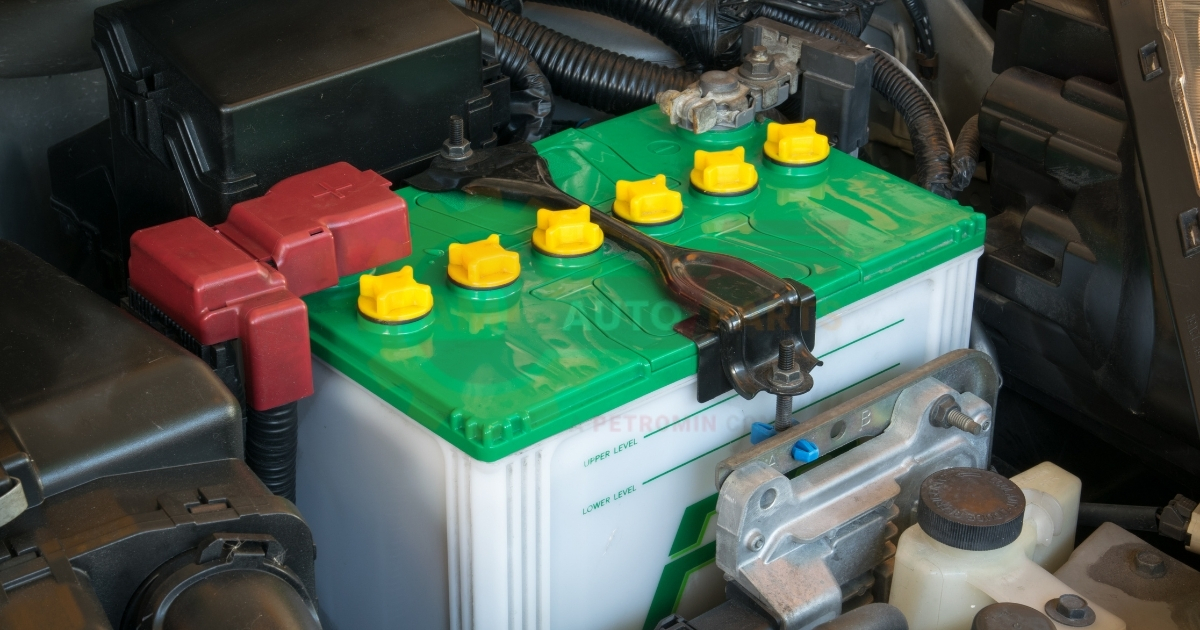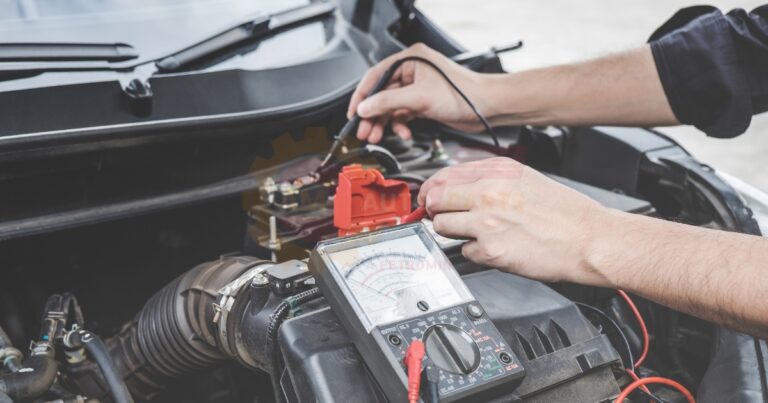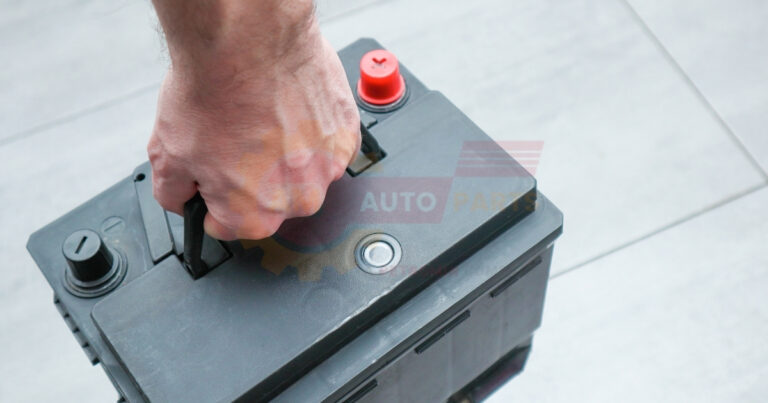Car Battery Voltage After Sitting Overnight: What’s Normal?
What should car battery voltage be after sitting overnight?
Understanding the normal voltage range for a car battery after sitting overnight is crucial for maintaining your vehicle’s health and performance. Let’s delve into the details of what you should expect and why it matters.
Normal voltage range for a healthy battery
A healthy car battery should maintain a voltage between 12.4 and 12.7 volts after sitting overnight. This range indicates that the battery has retained its charge and is ready to start your vehicle without issues. According to AM Autoparts, a voltage reading within this range suggests that your battery is in good condition and functioning properly.
It’s important to note that the exact voltage may vary slightly depending on factors such as battery age, temperature, and the specific make and model of your vehicle. However, as long as the voltage falls within this range, you can generally be confident in your battery’s health.
- Ideal voltage range: 12.4 to 12.7 volts
- Minimum acceptable voltage: 12.2 volts
- Full charge voltage: 12.6 to 12.8 volts
Factors affecting overnight voltage drop
Several factors can influence the voltage drop of your car battery overnight. Understanding these factors can help you interpret your battery’s performance more accurately:
- Temperature: Cold weather can cause a more significant voltage drop, while warm temperatures may result in a smaller decrease.
- Battery age: Older batteries tend to lose charge more quickly than newer ones.
- Parasitic drain: Some electrical components in your vehicle may continue to draw small amounts of power even when the car is off.
- Battery condition: A battery with internal issues or damage may experience a more substantial voltage drop.
By considering these factors, you can better assess whether your battery’s overnight voltage drop is normal or if it indicates a potential problem.
| Factor | Impact on Voltage Drop |
| Cold temperature | Increased drop |
| Warm temperature | Decreased drop |
| Old battery | Larger drop |
| New battery | Smaller drop |
| Parasitic drain | Gradual decrease |
| Battery damage | Significant drop |
Measuring battery voltage with a multimeter
To accurately determine your car battery’s voltage after sitting overnight, you’ll need to use a multimeter. This simple tool can provide valuable insights into your battery’s health and performance.
Steps to test car battery voltage
Follow these steps to measure your car battery voltage using a multimeter:
- Ensure the car has been off for at least 8 hours.
- Set the multimeter to DC voltage (usually marked with a V and a straight line).
- Connect the red probe to the positive terminal (+) of the battery.
- Connect the black probe to the negative terminal (-) of the battery.
- Read the voltage displayed on the multimeter screen.
Remember to take safety precautions when working with car batteries, such as wearing gloves and eye protection.
- Gather necessary tools: Multimeter, safety gear
- Locate battery terminals: Usually under the hood
- Ensure proper connection: Red to positive, black to negative
- Record readings: Note down the voltage for future reference
Interpreting multimeter readings
Once you’ve obtained a voltage reading, you can interpret it to assess your battery’s condition:
- 12.6V or higher: Fully charged and healthy
- 12.4V to 12.5V: 75% to 90% charged, still good
- 12.2V to 12.3V: 50% to 75% charged, may need charging
- 12.0V to 12.1V: 25% to 50% charged, requires immediate charging
- Below 12.0V: Discharged or potentially damaged
If your battery consistently shows readings below 12.4V after sitting overnight, it may be time to consider charging or replacing it.
Signs of a weak or failing battery
Recognizing the signs of a weak or failing battery can help you address issues before they leave you stranded. Let’s explore two key indicators to watch for.
Voltage drop below acceptable levels
If your car battery voltage drops below 12.2V after sitting overnight, it’s a clear sign that your battery is struggling to hold a charge. This could be due to various factors, including:
- Age-related deterioration
- Internal damage or sulfation
- Excessive parasitic drain
- Alternator issues
Consistently low voltage readings indicate that your battery may need to be recharged or replaced soon. AM Autoparts recommends monitoring your battery’s voltage regularly to catch potential problems early.
- Monitor voltage over time
- Look for consistent drops below 12.2V
- Consider professional testing if voltage is consistently low
Difficulty starting the engine
Another telltale sign of a weak battery is difficulty starting your engine, especially after the car has been sitting overnight. You may notice:
- Slow cranking when turning the key
- Multiple attempts needed to start the engine
- Dimming headlights or interior lights during startup
If you experience these symptoms, it’s crucial to have your battery and charging system checked promptly. Ignoring these signs could lead to unexpected breakdowns and potentially costly repairs.
Impact of temperature on battery voltage
Temperature plays a significant role in car battery performance and voltage. Understanding how different weather conditions affect your battery can help you better maintain and care for it.
Cold weather effects on battery performance
Cold temperatures can have a substantial impact on what should car battery voltage be after sitting overnight. In frigid conditions, you may notice:
- Reduced battery capacity
- Slower chemical reactions within the battery
- Increased internal resistance
These factors can lead to lower voltage readings and difficulty starting your vehicle in cold weather. To mitigate these effects:
- Park in a garage or sheltered area when possible
- Use a battery blanket or insulator in extreme cold
- Consider using a battery with a higher cold cranking amps (CCA) rating
| Temperature | Effect on Battery Voltage |
| Below 32°F (0°C) | Significant decrease |
| 32°F to 50°F (0°C to 10°C) | Moderate decrease |
| 50°F to 70°F (10°C to 21°C) | Optimal performance |
| Above 70°F (21°C) | Slight increase, potential long-term damage |
Hot weather and battery degradation
While cold weather primarily affects battery performance, hot weather can lead to long-term battery degradation. High temperatures can cause:
- Accelerated water evaporation from the electrolyte
- Increased corrosion of internal components
- Faster self-discharge rates
To protect your battery from heat-related damage:
- Park in shaded areas or use a car cover
- Keep the battery clean and free from corrosion
- Check fluid levels regularly (for non-sealed batteries)
Maintaining optimal battery voltage
Proper maintenance is key to ensuring your car battery maintains optimal voltage levels, even after sitting overnight. Let’s explore some essential practices to keep your battery in top condition.
Regular battery checks and maintenance
Performing routine checks and maintenance can significantly extend your battery’s life and performance. Here are some key steps to include in your maintenance routine:
- Visual inspection: Check for signs of corrosion, damage, or leaks
- Clean terminals: Remove any buildup of corrosion on battery terminals
- Secure connections: Ensure battery cables are tight and properly connected
- Check fluid levels: For non-sealed batteries, maintain proper electrolyte levels
- Test voltage regularly: Use a multimeter to monitor battery health
By incorporating these practices into your vehicle maintenance routine, you can catch potential issues early and maintain optimal battery voltage.
- Schedule monthly battery checks
- Keep a log of voltage readings
- Address any issues promptly
Proper charging techniques
When your battery voltage drops below optimal levels, proper charging is essential to restore and maintain its health. Follow these guidelines for effective battery charging:
- Use a quality battery charger designed for your battery type
- Charge at the correct amperage (typically 2-10 amps for most car batteries)
- Avoid overcharging, which can damage the battery
- Charge in a well-ventilated area to prevent gas buildup
- Disconnect the battery from the vehicle if charging for extended periods
Remember that frequent need for charging may indicate a deeper issue with your battery or charging system. If you find yourself regularly needing to charge your battery, it’s wise to have it professionally inspected. Car battery replacement percentage shows how much of your car’s battery power is left Knowing this helps you decide when it’s time to get a new battery before your car won’t start Automotive electrical measurement helps check if car parts that use electricity are working right It uses special tools to test things like batteries wires and lights in vehicles
When to replace your car battery
Even with proper maintenance, car batteries eventually reach the end of their lifespan. Knowing when to replace your battery can help you avoid unexpected breakdowns and ensure reliable vehicle performance.
Age-related voltage decline
As car batteries age, their ability to hold a charge and maintain proper voltage diminishes. On average, car batteries last between 3-5 years, depending on usage and environmental factors. Signs of age-related voltage decline include:
- Gradually decreasing voltage readings over time
- Increased frequency of charging needed
- Slower engine cranking, even in moderate temperatures
If your battery is approaching or exceeding the 3-5 year mark and showing these signs, it’s likely time to consider a replacement.
- Monitor battery age from date of purchase
- Keep records of voltage readings over time
- Consider proactive replacement at 4-5 years, even if performance is still acceptable
Persistent low voltage issues
If your battery consistently shows low voltage readings after sitting overnight, despite proper charging and maintenance, it may be time for a replacement. Persistent low voltage can indicate:
- Internal damage or sulfation
- Loss of capacity due to repeated deep discharges
- Manufacturing defects or premature failure
All Makes Autoparts suggests that if your battery voltage regularly falls below 12.2V after sitting overnight and doesn’t improve with charging, it’s time to invest in a new battery. Remember that continuing to use a failing battery can put additional stress on your vehicle’s alternator and electrical system.






